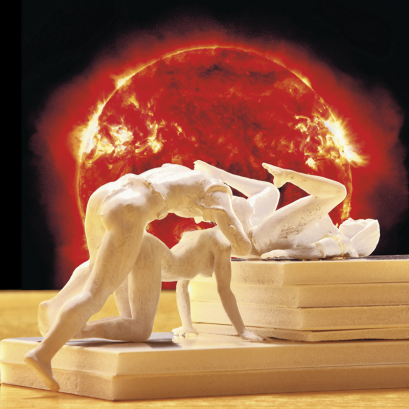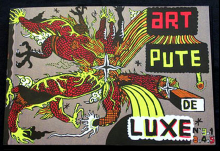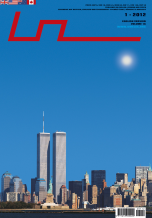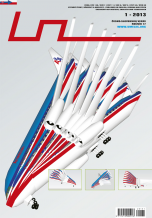| DIVUS PRAHA: PAUL CHANEY: THE SUN IS BLACK | exhibition | |||||||||||||
|
|||||||||||||
PAUL CHANEY: THE SUN IS BLACK | exhibition17.12.2011 18:00Divus | en cs |
|||||||||||||
Saturday 17.12.2011 18:00‘Recall, however, that they spoke always of a buried terrestrial sun which must be exhumed, a rotting sun oozing black flame, the black corpse of the sun’ Dr Hamid Parsani – Negarestani’s protagonist in:Cyclonopedia – Complicity with Anonymous Materials (Re.press 2008)
Solar Hegemony
Established in Platonic philosophy, the Sun has traditionally been accepted as a metaphor for the source of intellectual illumination. The ancients worshipped the Sun as giver of life and radiant provider.
It is the green parts of the plants of the solid earth and the seas, which endlessly operate the appropriation of an important part of the sun’s luminous energy. It is in this way that light – the sun – produces us, animates us, and engenders our excess. This excess, this animation are the effect of the light (we are basically nothing but an effect of the sun)
In this and other texts, however, Bataille opens up to us another, malefic aspect beyond the Sun’s apparent benevolence. Carboniferous Insurgency Through the improbability of photosynthesis, and fuelled by the eternal emanation of excess energy from the Sun, living entities absorb and transform gases into solid mass – thereby changing the chemistry of the biosphere. During the Carboniferous period, giant vertical mosses locked up vast amounts of free carbon to form coal. Trillions of tonnes of ammonites, and other sea creatures – unable to resist the gravitational imperative upon their death – formed limestone (calcium carbonate) in great strata. Life is a geological force. In this way, the plants and animals of prehistory have been instrumental in establishing the chemical structure of the biosphere. Life, as a progressive and evolving system, and faced with the capitalist hedonism of the Sun’s overbearing extravagance, found ways to absorb the toxic gift of solar excess in a kind of ‘do or die’ move. In a clever sideways manipulation of its own materials, and as a result of multiple evolutionary traumas, life itself rose up against the Sun’s dominance, initiating an insurgency which lasted millions of years, and which ended in the successful ‘binding’ into geological strata of excess solar energy. These materials of revolution are the inner black sun described by Bataille – a stinking black petrochemical pus absorbed into the body of the planet, enveloped in cystic enclaves, vast sumps of photosynthetically fixed carbon capped by subsequent protective sedimentary strata, a result of climatic and geological complicity with the scheme.
‘Recall, however, that they spoke always of a buried terrestrial sun which must be exhumed, a rotting sun oozing black flame, the black corpse of the sun’ Children of the Sun As the self-proclaimed Child of the Sun – and the only living entity to have effectively re-entered geological time – the human is proving efficient at undoing the work of the Carboniferous Insurgency. As the perfect host for the insane cancerous will of capitalism, the human de-constructs the biotic dam, temporarily put in place against the tide of Erathication (the joining of the Earth’s inner sun, with the Sun). The Child of the Sun carries out the desire of the Sun, defined in a series of pacts mediated by capital. Upon its release, bound solar excess will always express itself as terrestrial excess, before becoming lost. This is the possible, perfectly coupled with the impossible – the Sun gives us everything, but also destroys us. Whether the extraction of bound solar excess is undertaken through Bolshevik pride or Capitalist greed, it does not matter – the result is the same. The human works as an instrument of release, solely attracted by the power potential contained within the material, but only able to make use of the power for a brief moment, before it is dissipated. This is the only deal offered by the Sun: at our moment of highest glory, we will collapse from exhaustion, everything totally spent.
‘…[E]xpenditure, or sacrificial consumption, is not an appeal, an exchange, or a negotiation, but an uninhibited wastage that returns energy to its solar trajectory, releasing it back into the movement of dissipation that the terrestrial system – culminating in restricted human economies – momentarily arrests. Voluptuary destruction is the only end of energy, a process of liquidation that can be suspended by the accumulative efforts whose zenith form is that of the capitalist bourgeoisie, but only for a while. For solar economy, and excess must, in the end, be spent.’
‘Capital attempts to emulate the Sun, but inverts it…Capital inverts excess to scarcity. With scarcity comes the need-turn-desire to acquire. We are not natural consumers, but unnatural acquirers. Hence, Capital’s need for each of us to think we are individuals-who-lack, so that Capital can extend [to] each of us the dream of the Sun’s excess. Yes, Capital has appropriated the Sun. Capital, unlike the Sun, however, gives credit [access to excess] but demands a greater debt.
Extended Bound Excess Diagram: Section I The first section of the wall diagram represents the biosphere and all of its contents (including the human and his technologies) as a holistic continuum. It is a timeline, where each centimeter of the diagram represents 10 years of time. Excess biospheric carbon (coal) is represented by the multi-colored line. The coal becomes stratified into a separate fossilized layer at the end of the carboniferous period 350,000,000 years ago (black coal), and 20,000,000 years ago(brown coal).
Human civilization is represented as a separate line that starts with the beginning of agriculture 10,000 years ago. The human line becomes increasingly swollen at the beginning of the industrial revolution, as fossilized carbon is released from its bound layer, and re-enters the atmosphere through the activity of the industrialized human. The diagram ends in speculation, when the human line comes to an abrupt end once all of the bound excess carbon has been released and the energy it contains is dissipated. Extended Bound Excess Diagram: Section II The second section of the wall diagram (containing the images) attempts to describe the complex phenomena centered around the city of Most and its recent history of coal extraction. Events are represented in time and space. The flow of dissipating energy created by the release of bound excess carbon (in this case brown coal), is represented again by the multi-colored line. The causal connections between places and events are shown by the black lines.
Floor Pit The floor pit contains the results of the ‘Coal Fun Workshop’ involving the children of … school, where the children were asked to paint designs onto lumps of brown coal. Solar Fuck Club, 2011
Many thanks to: Andrej Bazent, Martina Bartova, Olga Sixtova, Staff and Children of Základná umělecká škola Praha 10 - Hostivař, Lenka Kužvartová, Jaromir Lavička, Rita Rarovskaya, Ivan Mečl, Peter Kováčik and all the staff at Divus
17.12.2011 18:00
Рекомендуемые статьи
|
|||||||||||||
|
04.02.2020 10:17
Letošní 50. ročník Art Basel přilákal celkem 93 000 návštěvníků a sběratelů z 80 zemí světa. 290 prémiových galerií představilo umělecká díla od počátku 20. století až po současnost. Hlavní sektor přehlídky, tradičně v prvním patře výstavního prostoru, představil 232 předních galerií z celého světa nabízející umění nejvyšší kvality. Veletrh ukázal vzestupný trend prodeje prostřednictvím galerií jak soukromým sbírkám, tak i institucím. Kromě hlavního veletrhu stály za návštěvu i ty přidružené: Volta, Liste a Photo Basel, k tomu doprovodné programy a výstavy v místních institucích, které kvalitou daleko přesahují hranice města tj. Kunsthalle Basel, Kunstmuseum, Tinguely muzeum nebo Fondation Beyeler.
|








 Focusing on the massive extraction of brown coal near the recently destroyed northern city of Most, this new diagrammatic work uncovers the convoluted narratives embedded in coal as a politically charged material, and presents coal as a fossilized component of Georges Bataille’s ‘Solar Economy’. Here, coal is not considered an inherently problematic material, but a consequence of a gallant vegetative resistance against the thermonuclear holocaust at the center of our solar system – the Sun (after Negarestani).
Focusing on the massive extraction of brown coal near the recently destroyed northern city of Most, this new diagrammatic work uncovers the convoluted narratives embedded in coal as a politically charged material, and presents coal as a fossilized component of Georges Bataille’s ‘Solar Economy’. Here, coal is not considered an inherently problematic material, but a consequence of a gallant vegetative resistance against the thermonuclear holocaust at the center of our solar system – the Sun (after Negarestani).













































 We Are Rising National Gallery For You! Go to Kyjov by Krásná Lípa no.37.
We Are Rising National Gallery For You! Go to Kyjov by Krásná Lípa no.37.
Комментарии
Статья не была прокомментированаДобавить новый комментарий